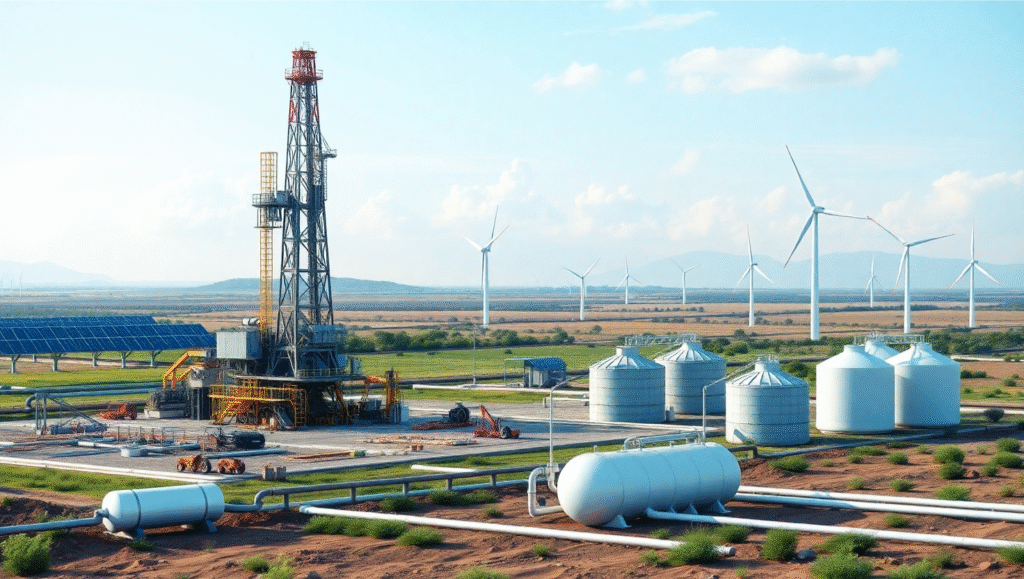Draft Petroleum & Natural Gas Rules, 2025
Syllabus: Government Policies & Interventions | Energy Security | Environment (GS II & III)
Source: Financial Express
Context:
The Ministry of Petroleum & Natural Gas has released the Draft Petroleum & Natural Gas Rules, 2025 to modernise and streamline India’s upstream oil and gas regulatory framework. The rules aim to address challenges of outdated laws, energy transition, and investor concerns.
Why Reforms Were Necessary?
- Outdated Legal Framework: The existing rules, framed in 1949 and 1959, lacked provisions for modern exploration techniques, renewable integration, and investor protection.
- Global Climate Commitments: Need to align India’s exploration regime with net-zero targets and international best practices.
- Ease of Doing Business: Industry demanded regulatory clarity, fiscal stability, and faster clearances.
- Infrastructure Underutilisation: Pipelines and facilities remain underused due to lack of third-party access mechanisms.
- Upcoming OALP Round X: India’s largest Exploration and Production (E&P) bidding round required modernised rules to attract global players.
Key Features of Draft Petroleum & Natural Gas Rules, 2025:
1. Stabilisation Clause
- Offers protection to licensees from future hikes in taxes or royalties.
- Allows compensation or tax deductions for fiscal changes post-contract signing.
2. Third-Party Infrastructure Access
- Mandates lessees to declare underutilised pipeline/facility capacity.
- Enables fair access to third parties with government oversight.
3. Renewable Integration in Oilfields
- Permits solar, wind, hydrogen, and geothermal projects within licensed areas.
- Supports India’s energy transition goals and hybrid infrastructure development.
4. Environmental & Climate Compliance
- Mandatory GHG monitoring and implementation of carbon capture and storage (CCS).
- Establishes site restoration funds and 5-year post-closure monitoring.
5. Data Governance Framework
- Government of India will own all operational data.
- External use subject to confidentiality for 7 years and prior approval.
6. Dedicated Adjudicating Authority
- An officer of Joint Secretary rank to oversee:
- Dispute resolution
- Compliance enforcement
- Penalties for violations
7. Contractual and Operational Reforms
- Introduces revised Model Revenue Sharing Contracts (MRSCs).
- Enables unitisation, lease mergers, and voluntary relinquishment.
8. Repeal of Obsolete Rules
- Replaces the Petroleum Concession Rules, 1949 and PNG Rules, 1959.
- Aligns with the amended Oilfields Act, 1948.
Importance of the Petroleum & Natural Gas Sector:
- Energy Security: Accounts for 35% of India’s energy mix.
- Economic Role: Major contributor to employment, FDI inflow, and infrastructure.
- Revenue Source: Significant contributor via taxes, royalties, and dividends.
- Strategic Diplomacy: Strengthens India’s ties with West Asia, Africa, Latin America.
- Transition Enabler: Provides the base for CCS and green hydrogen infrastructure.
Expected Implications:
- Boost to Private Investment: Stability clauses and contract reforms improve investor confidence.
- Green Energy Push: Aligns fossil operations with India’s net-zero pathway.
- Improved Governance: Enhances transparency, accountability, and data security.
- Operational Efficiency: Encourages infrastructure sharing, lease optimisation, and unitisation of fields.
- Climate Leadership: Mandates CCS, site restoration, and GHG tracking.
Conclusion:
The Draft Petroleum & Natural Gas Rules, 2025 mark a transformative step in reforming India’s upstream hydrocarbon sector. By incorporating climate mandates, renewable integration, and investor safeguards, the rules balance energy security, economic growth, and environmental responsibility. They reflect India’s commitment to become a future-ready, net-zero-aligned energy economy.











